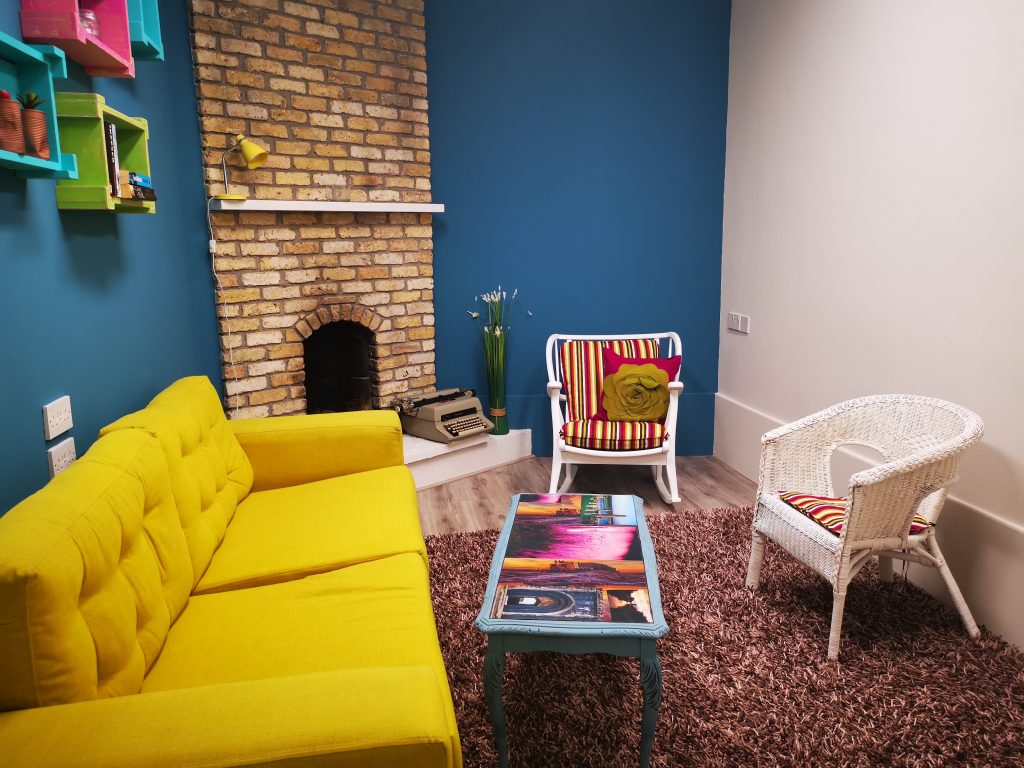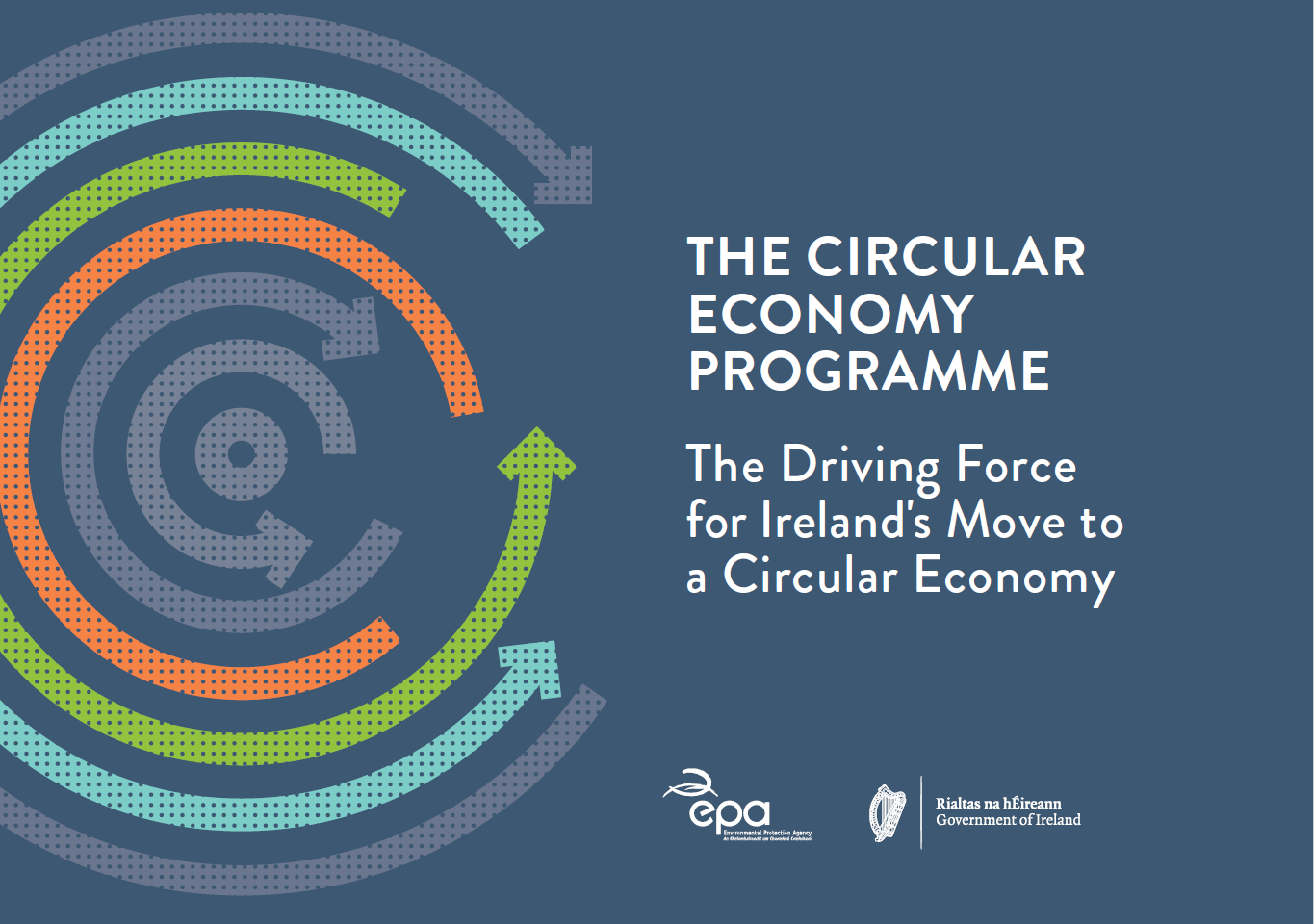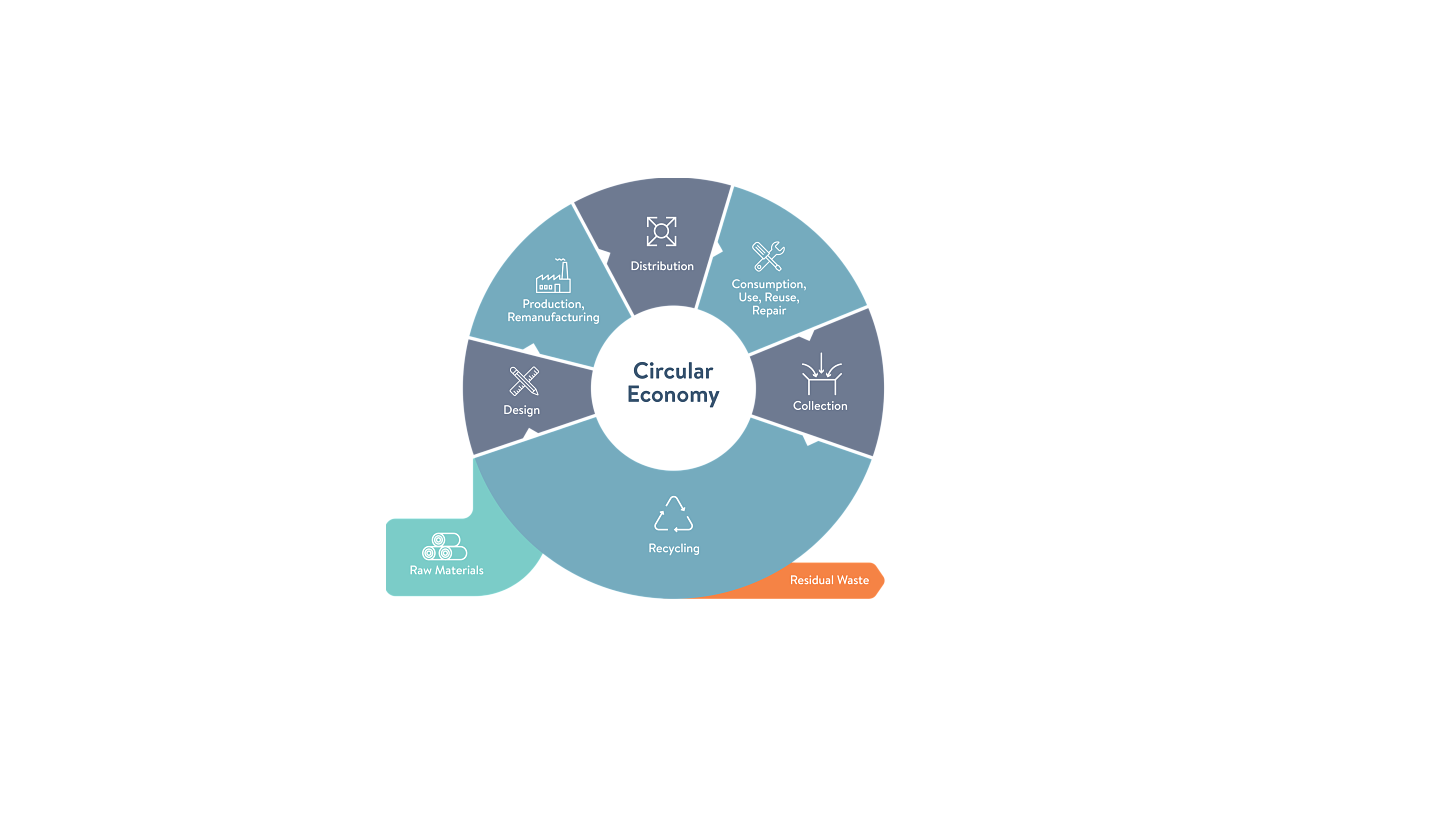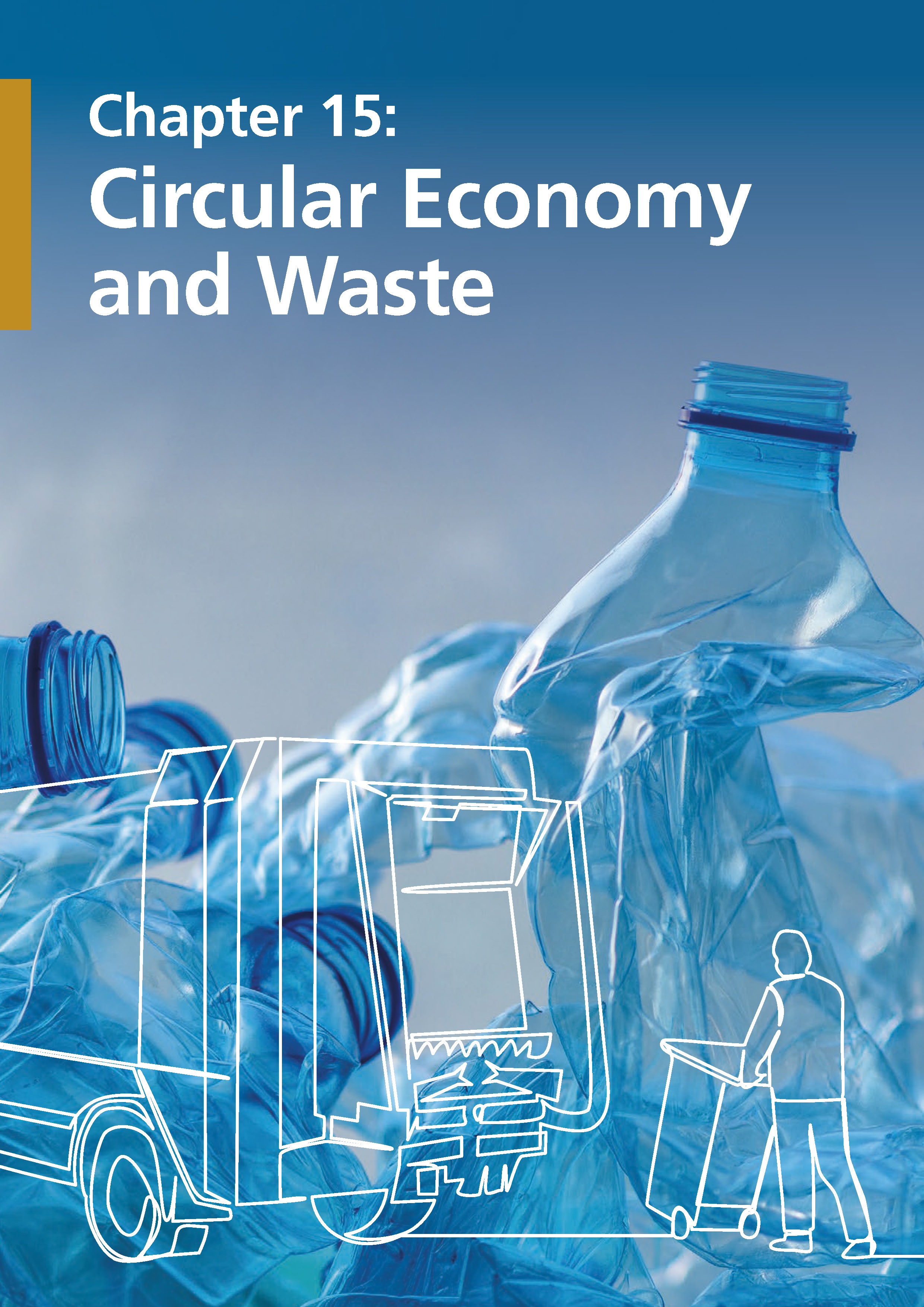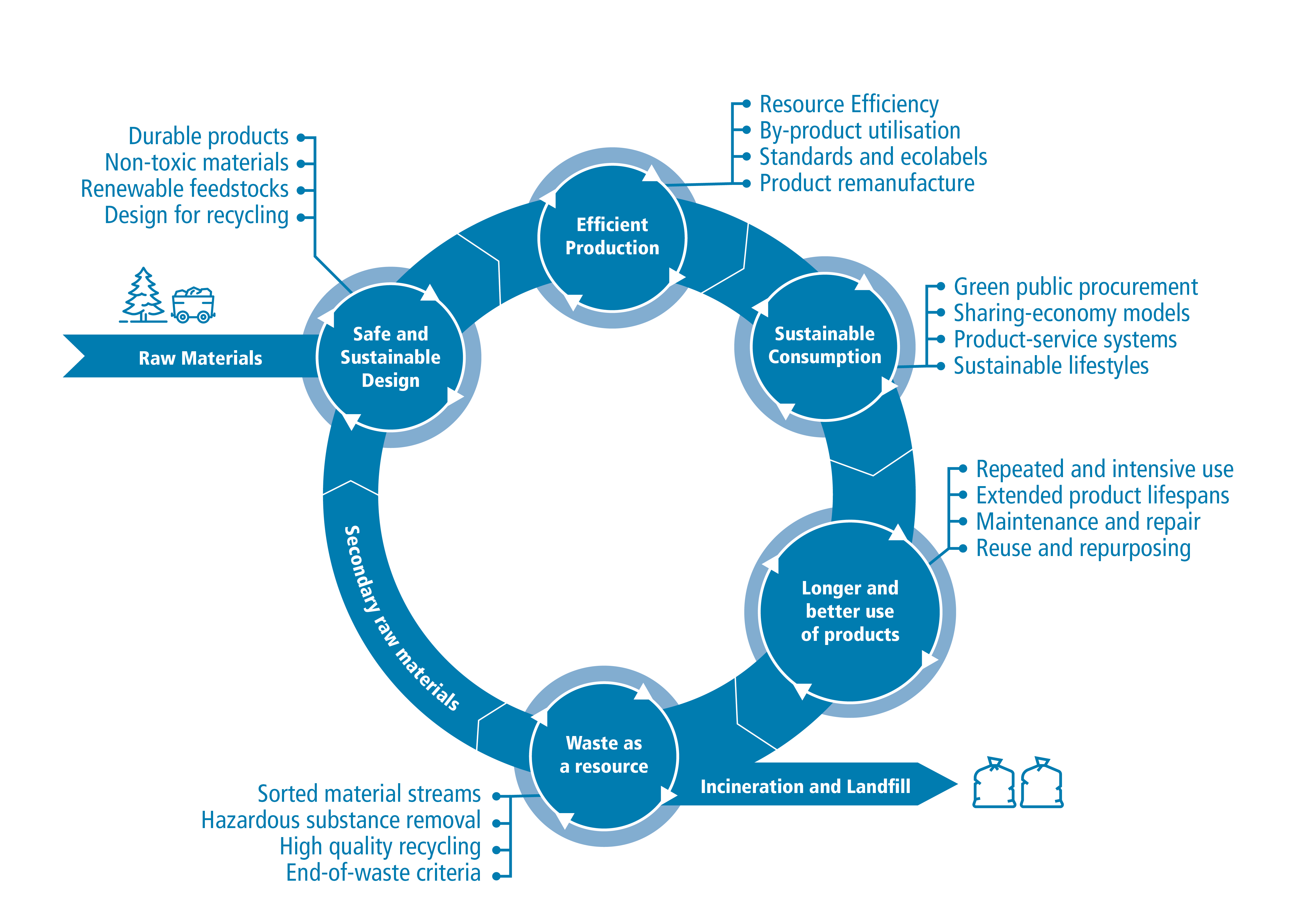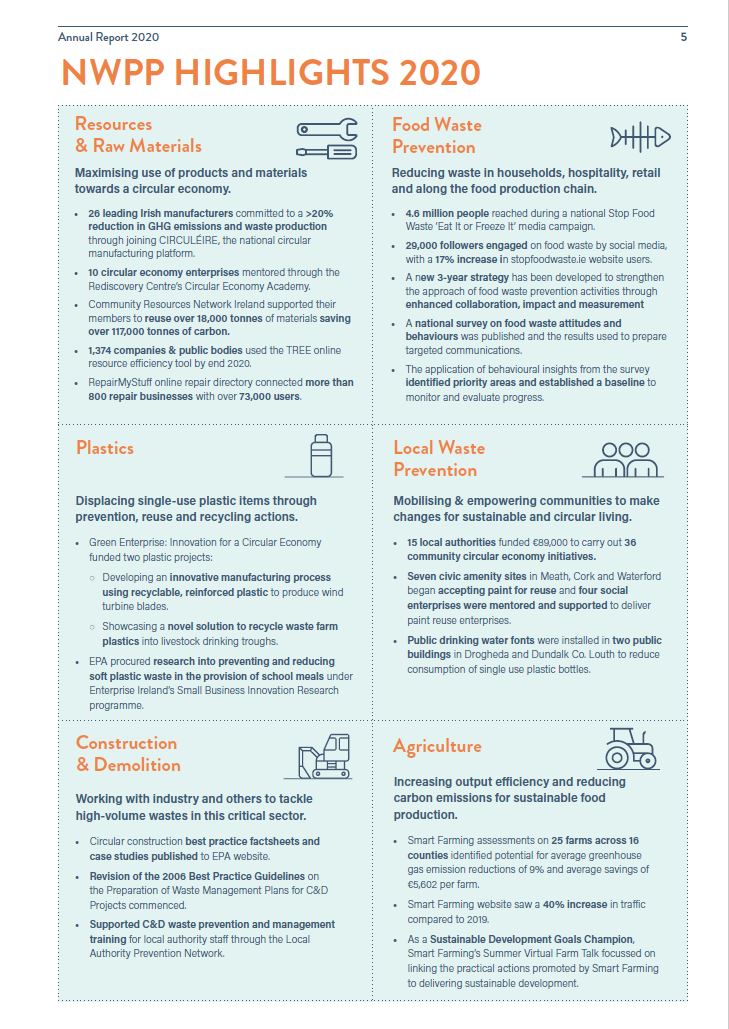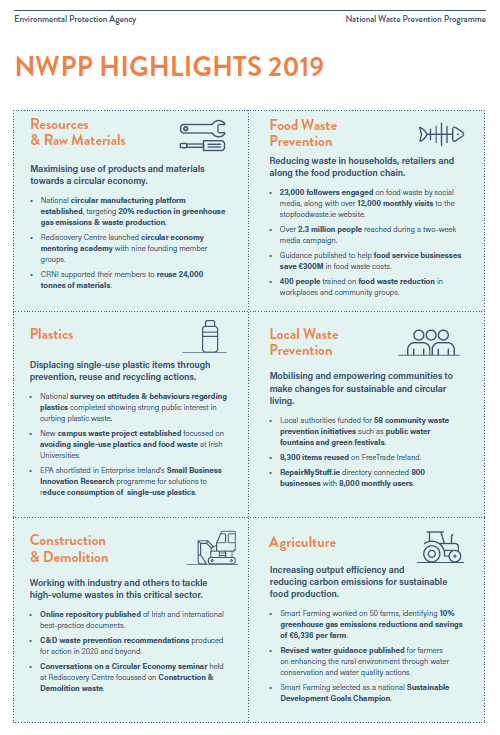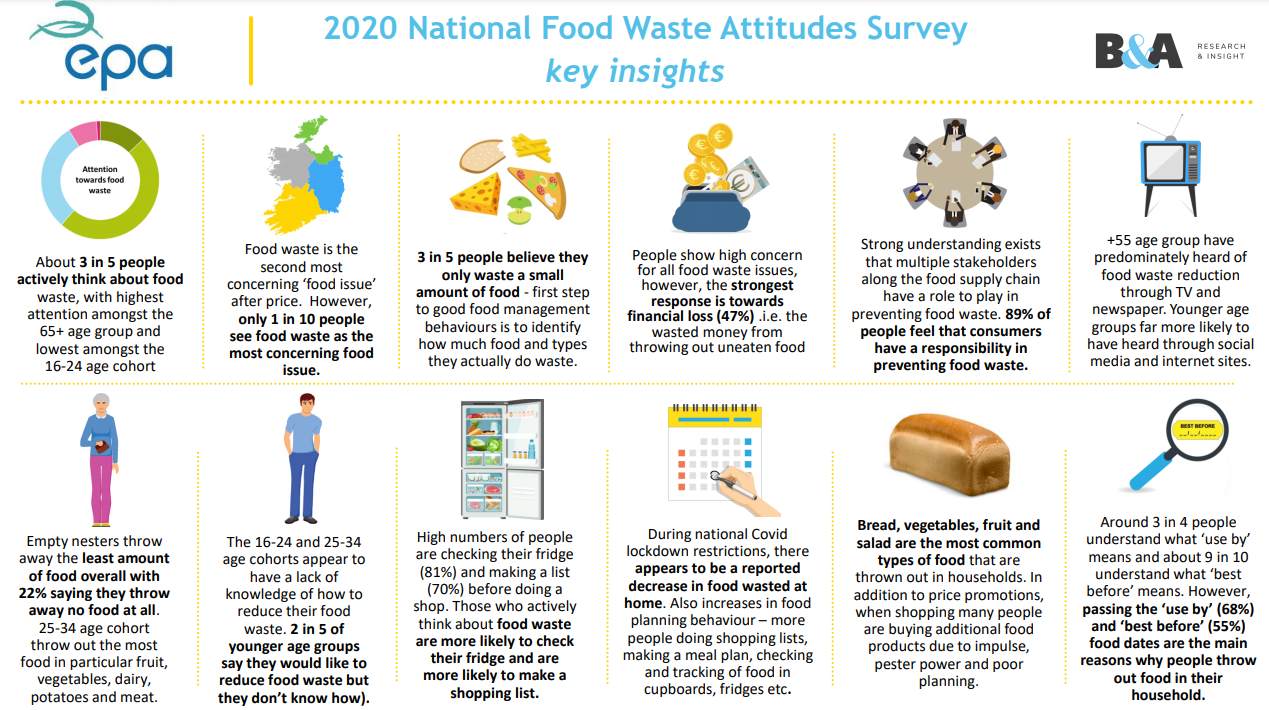The Circular Economy goes beyond the management of waste. The focus is on reducing the amount of raw materials we use and maximising the value of materials along the production and consumption chain. Waste is recycled where possible and brought back into production processes. Otherwise it is used to create energy instead of disposal to landfill. The Circular Economy graphic shows the different stages of the circular economy.
In Ireland, our current waste policy is A Waste Action Plan for a Circular Economy. The Government’s Circular Economy Strategy and the EPA’s Circular Economy Programme were published in 2021. The EPA’s Circular Economy Programme programme has been devised to support the Government’s Circular Economy Strategy and is a reconfiguration of Ireland’s National Waste Prevention Programme. At EU level, the European Green Deal includes a Circular Economy Action Plan, with a focus on sustainability and turning climate and environmental challenges into opportunities.
